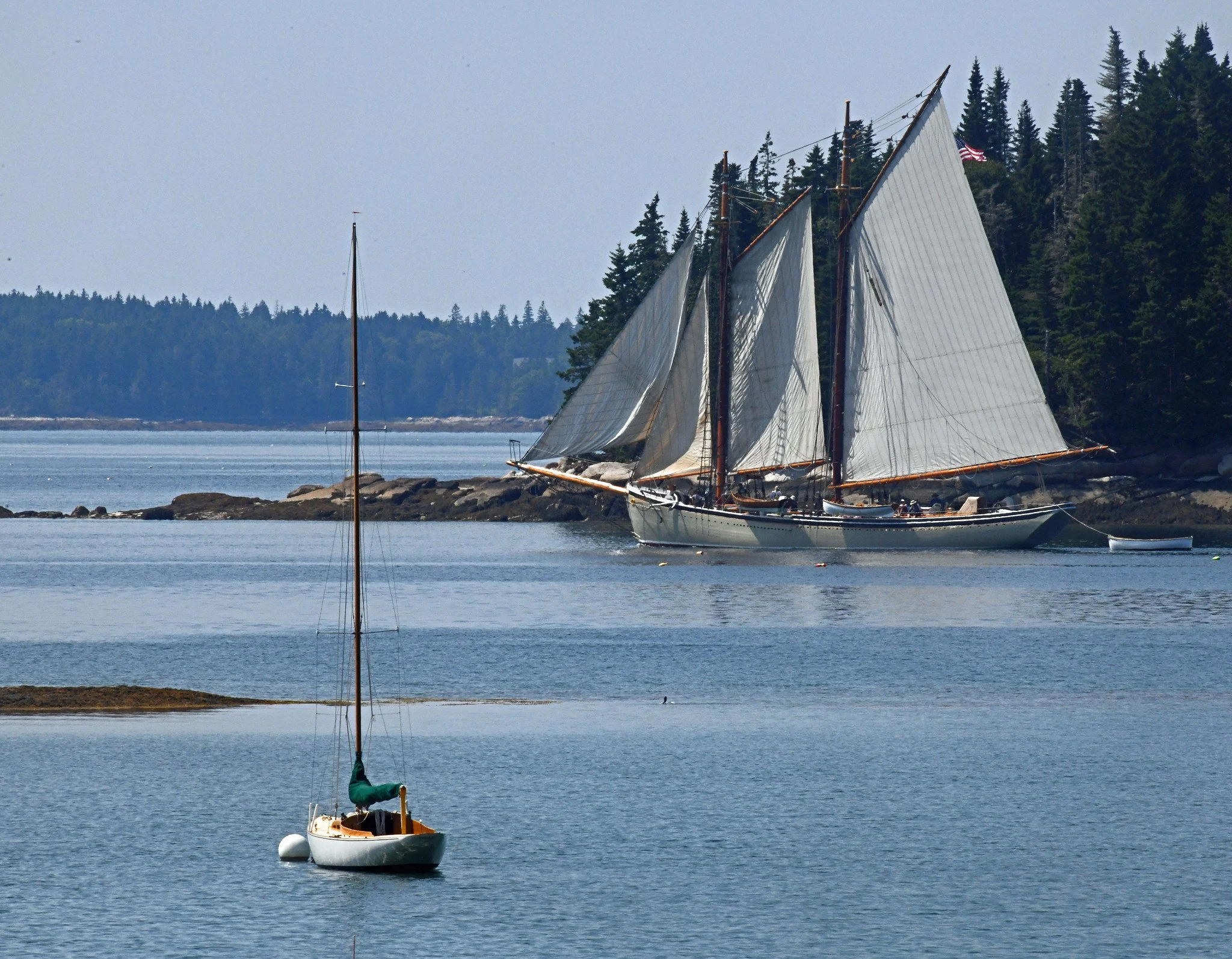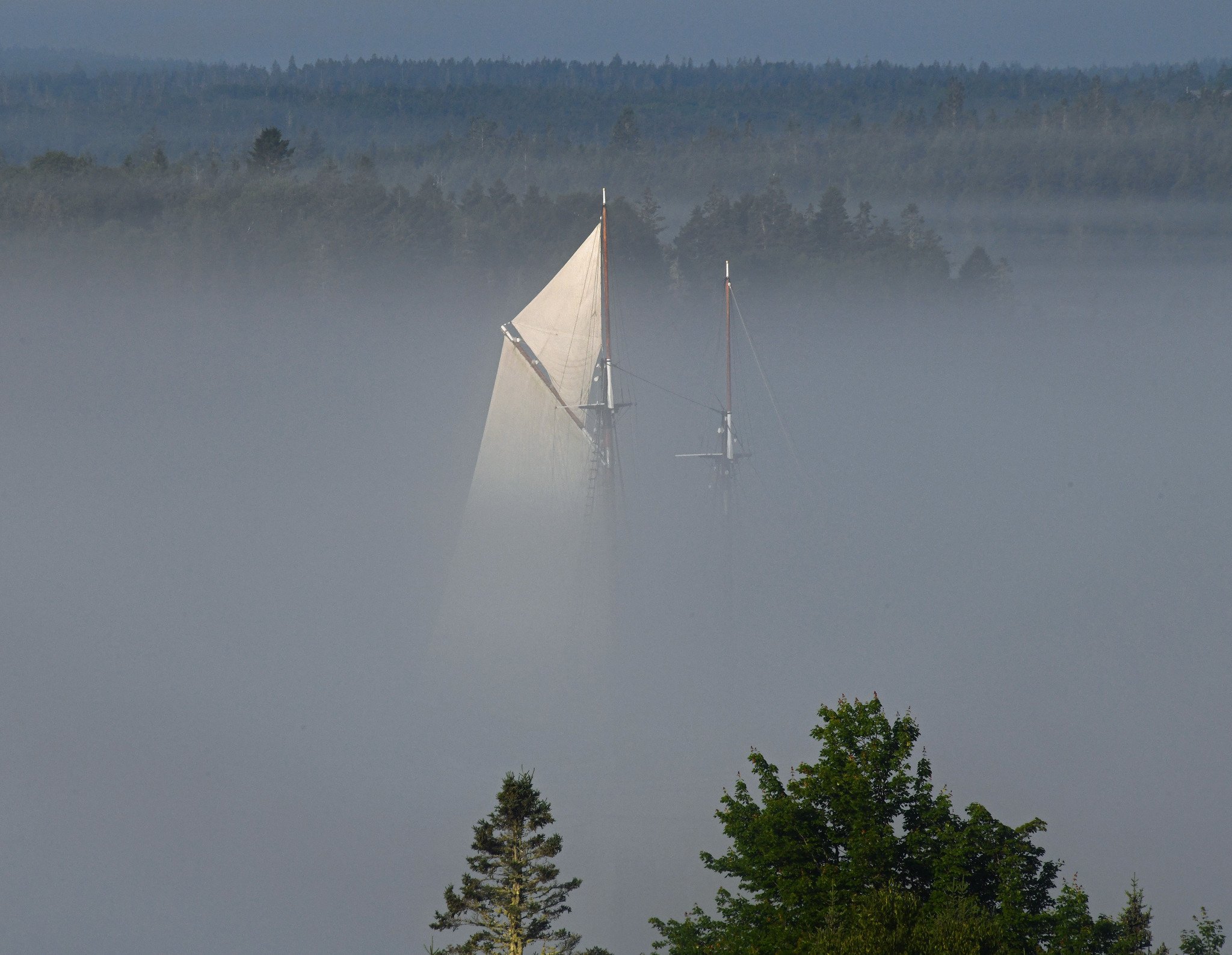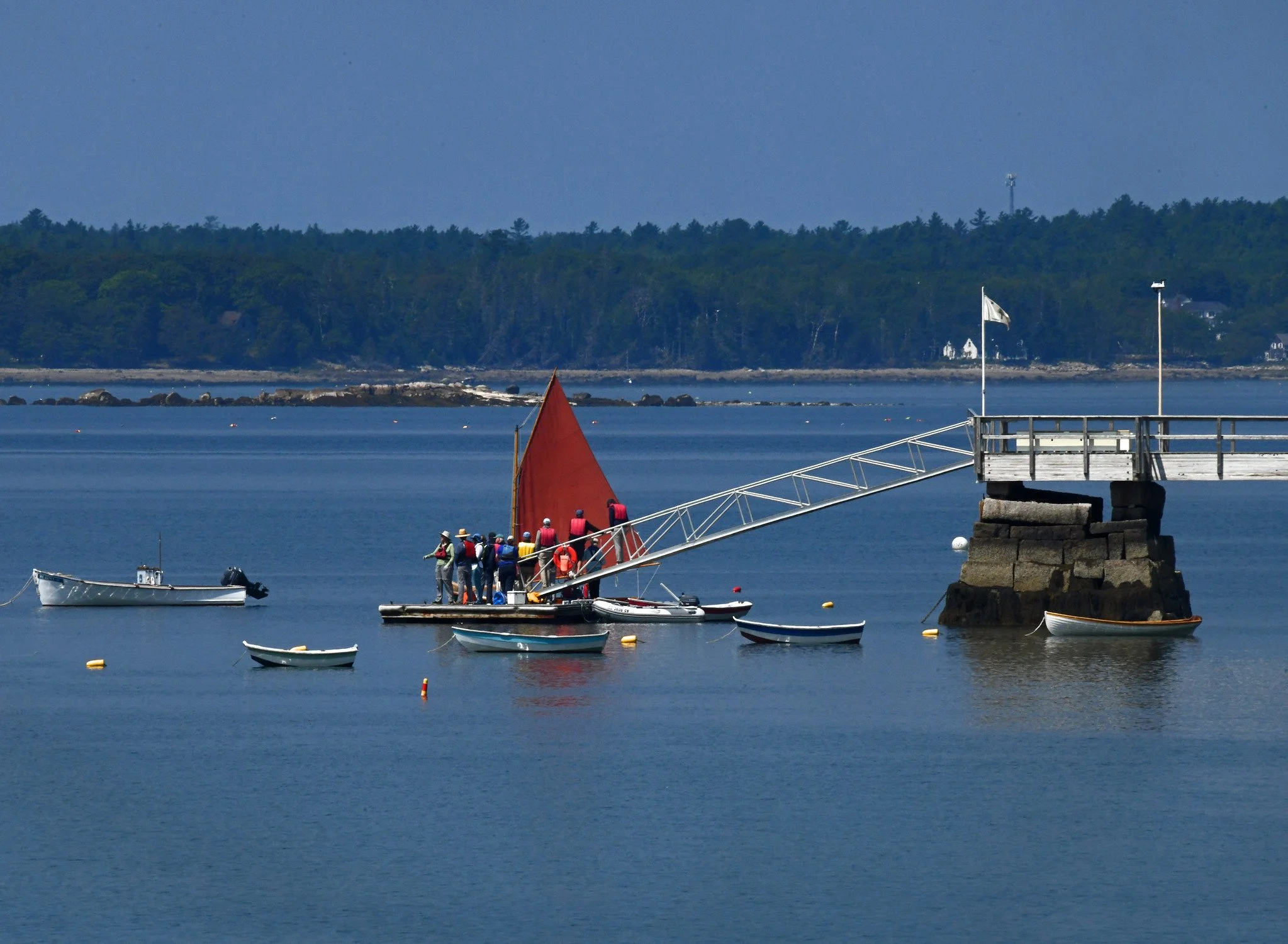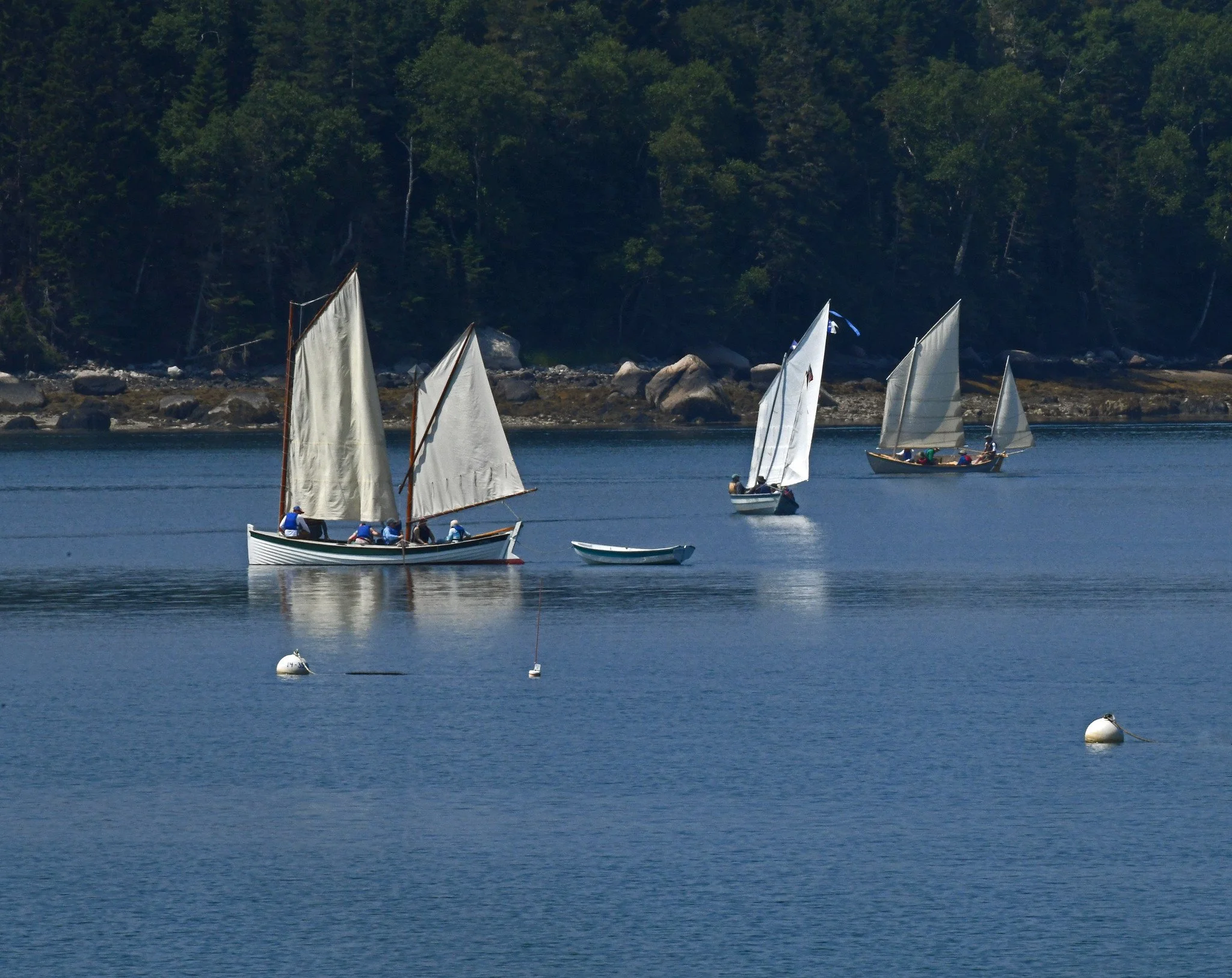July in Down East Maine is the first month of the two-month high summer. As you will see here, this is when our coast is most stunning, our natural landscapes and gardens most lush, our wildlife most vibrant, and our sense of community most evident in the local celebrations of Independence Day and mutual enjoyment of “The Way Life Should Be.”
As usual, we’ll begin these “Wish You Were Here” Postcards with the four vistas that we monitor for the record: Mount Desert Island from Brooklin’s Amen Ridge; the “Island House” in Brooklin’s Naskeag Harbor; the old boathouse in Blue Hill’s Conary Cove, and the view of Blue Hill, itself, at the end of Blue Hill Bay. As for that last vista, I should say “befogged view” of the near-mountain, since I’ve decided to show what it looked like on one of our foggy July days.
As for our larger wildlife, July is when all of our white-tailed deer get new reddish coats and our bucks get new velvet-covered “hats.” (The new antlers at first are covered by a protective and nourishing membrane often called of “velvet.”) Old and young, does and bucks, looked to be in excellent health:
On the ornithological front, there was good and tragic news. The bad news relates to Ozzie and Harriet, the ospreys that nest annually in their penthouse over Great Cove. Ozzie disappeared after a vicious fight with an invading osprey during which both appeared to be seriously injured. Harriet repeatedly returned to the empty nest and eventually abandoned it. This is my last image of her:
However, we have many happy summer residents of the feathered kind, including nesting common yellow throat warblers, song sparrows, and great blue herons:
Among the smaller winged wildlife, our returning monarch butterflies always are a concern in July. This year, they seemed to come late and in fewer numbers by my records. On the other hand, we had plenty of spangled fritillary butterflies and bees to help with the pollination of the flora. The dragonflies were increasing at a good pace in July and doing a good job of debugging the landscapes.
On the flora front, there was enough precipitation in July to keep the woods and ponds vibrant and produce vast multitudes of wild and cultivated flowers and berries, only a few of which can be shown here:
In addition to summer flora and fauna there is this thing in coastal Maine simply called “summer fun.” This includes, among many things, community celebrations of Independence Day on July 4. Brooklin is well known for its celebration, which begins with rousing music by the Town Band in the shade of the maples in front of the library:
At about 10 or 10:30 a.m., the annual July 4th Parade winds its way through Town. It’s an eclectic event that includes fire department trucks from the region, imaginative floats, vehicles of all kinds (including classic cars), and ordinary people who suddenly feel like marching down the middle of the road. Here’s some of it:
After the Parade, everyone walks to the nearby Town Green. That’s where the adults can gossip, the children can engage in games and contests, and everyone can eat a delicious lunch. Among the children’s games, you’ll see toddlers trying to throw a “dead chicken” into a hole for a prize, friends trying to hit each other in the face with a wet sponge, and large numbers of fit children seeing who can climb the highest on a slippery pole:
Of course, summer water activities predominate here. Among the most popular tourist activities are multi-day cruises along the coast on classic windjammers that are joys to sail on and to see. Here are a few of the jammers that were seen in Brooklin’s Great Cove during July:
American Eagle (Passing by Frolic)
Angelique (Passing By a Mooring Raft)
Grace Bailey
Heritage I
Heritage II
Heritage III
Lewis R. French (In Light Rain)
Mary Day (In Fog) with J&E Riggin Coming In
Private boats powered by engines, sails, and muscle abound in the July waters in all sorts of weather:
There also are educational activities in Great Cove, where the Wooden Boat School has floating classrooms for novice and seasoned sailors:
It’s not just fun and games on the July waterfront. That’s when many lobster fishermen begin their season by loading traps onto their distinctive vessels and setting the traps in the coastal waters:
We now come to the July full moon. It’s traditionally called “The Buck Moon” because it appears when male deer regrow their annual antlers. Below you’ll see the July moon growing from its gibbous phase to a full moon, and fading to a crescent in a misty sky. You’ll also see a final merged image to remind you of the July moon’s traditional name.
(All images in this post were taken in Down East Maine during July of 2025.)


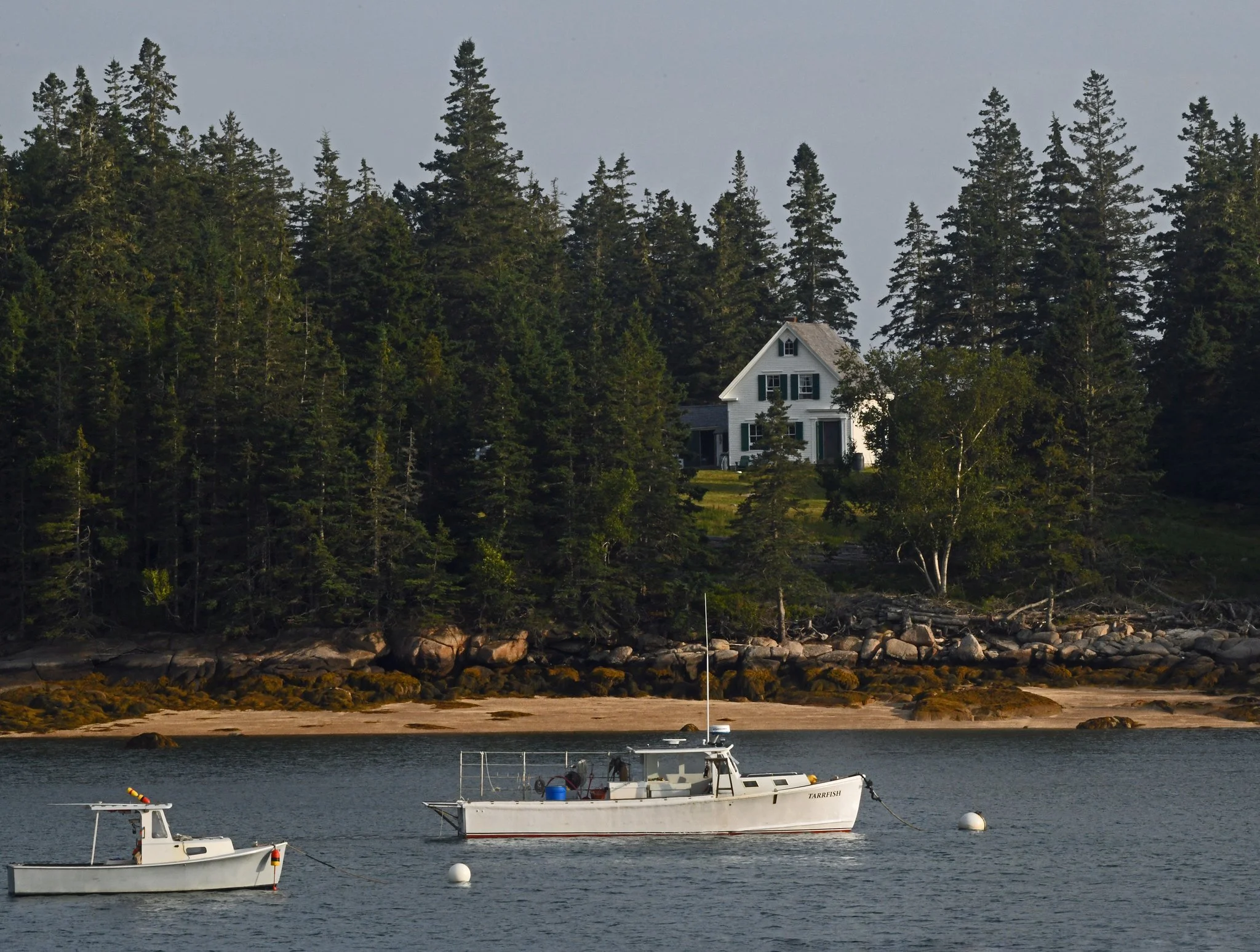
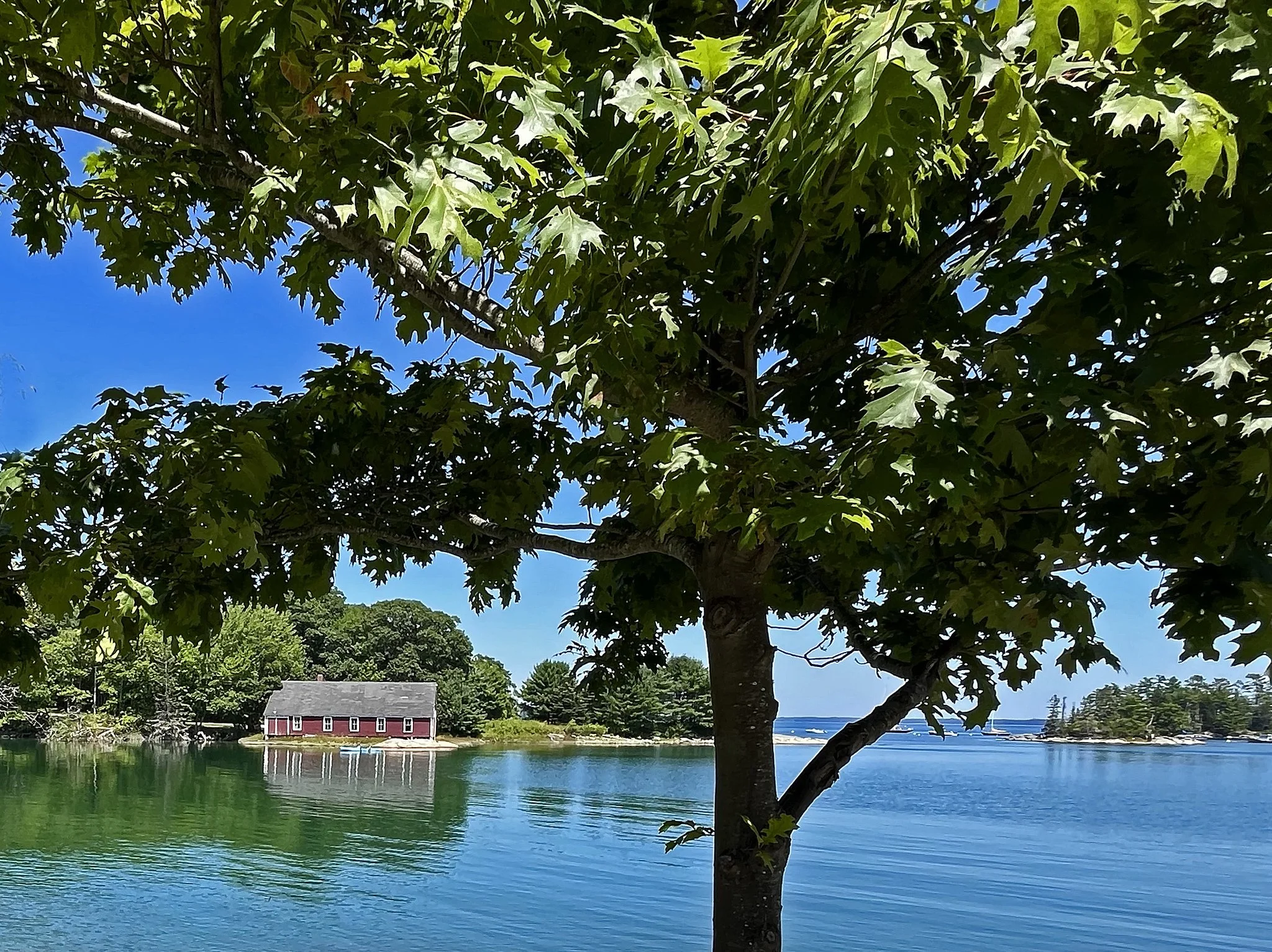












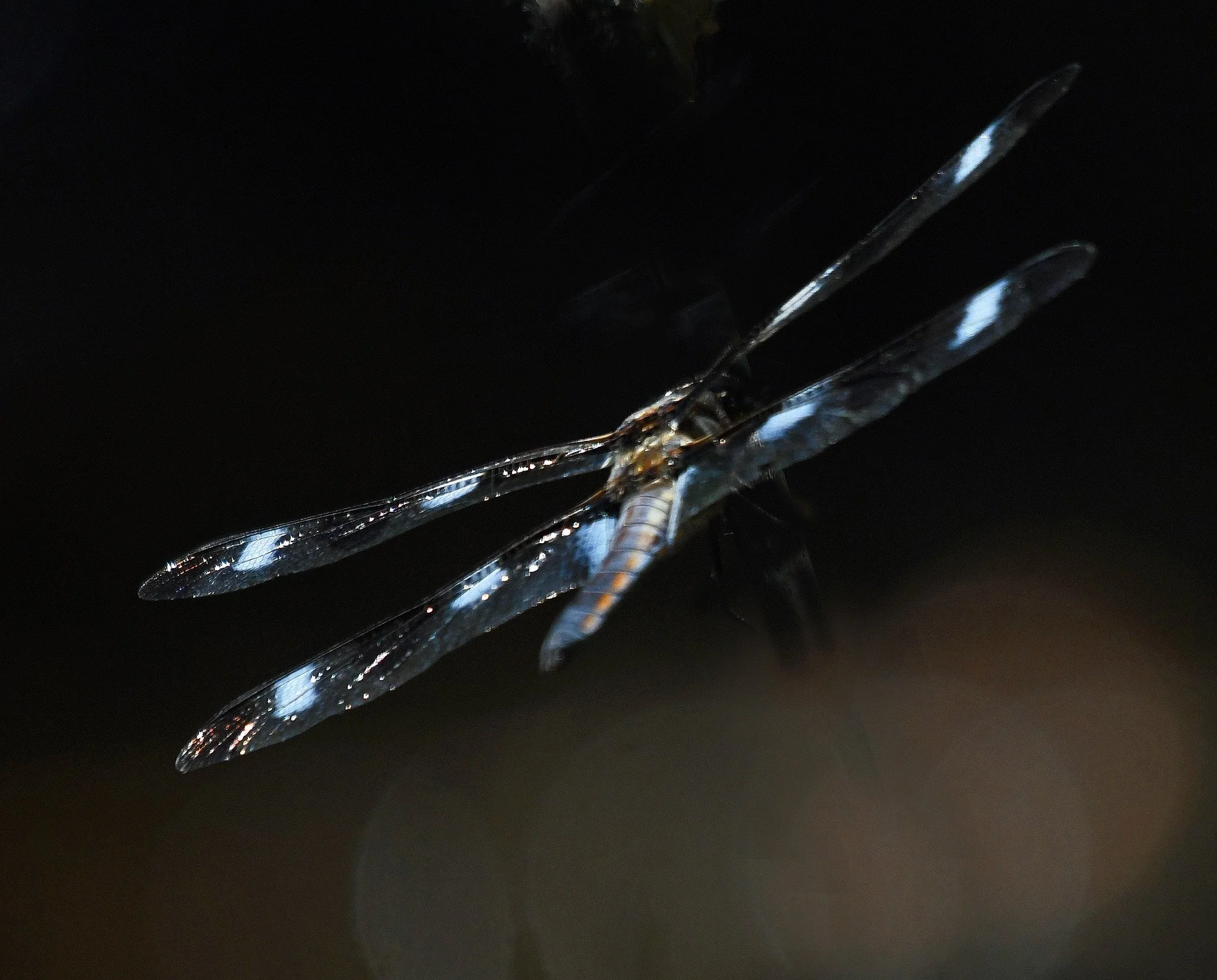














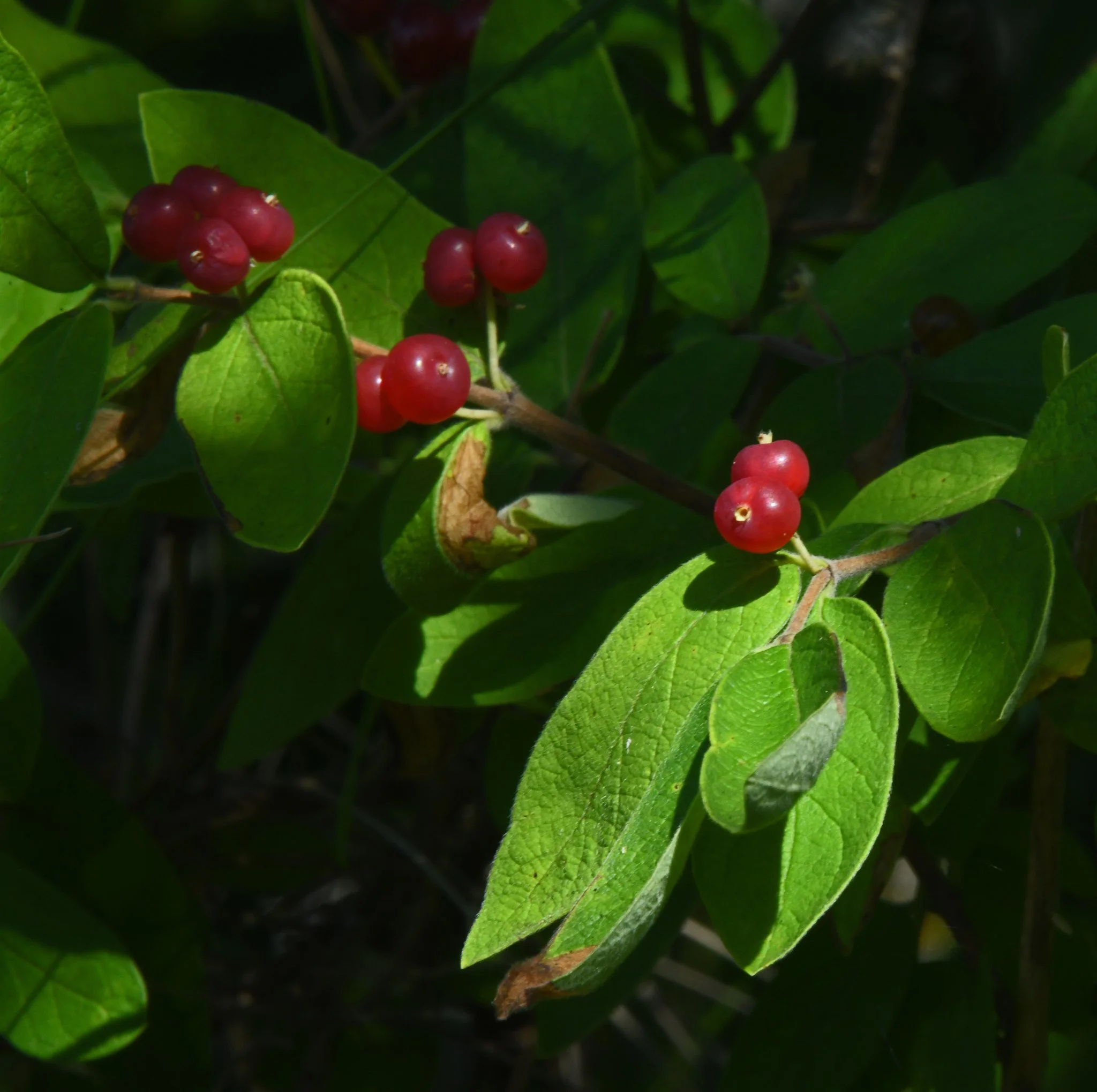





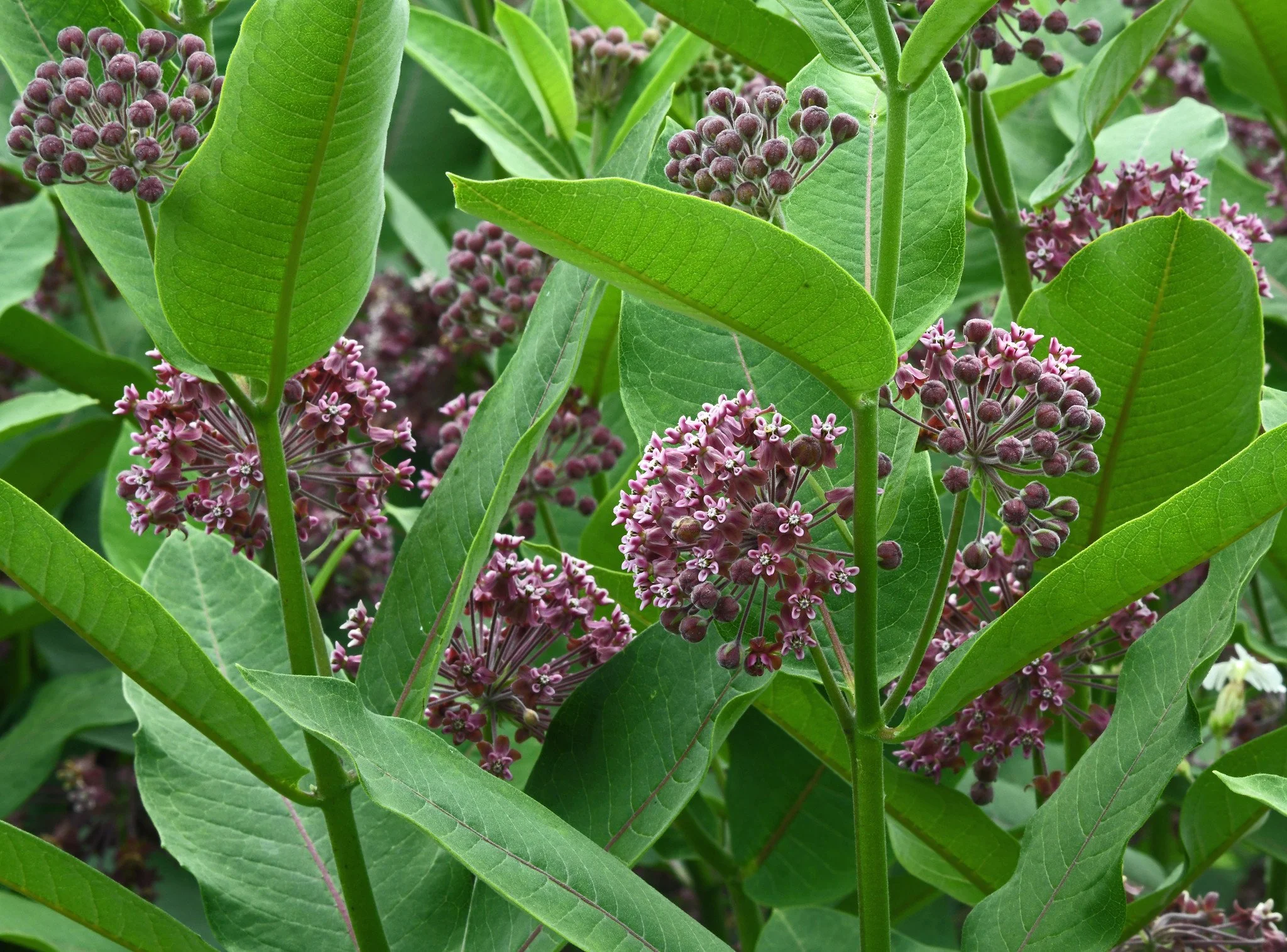


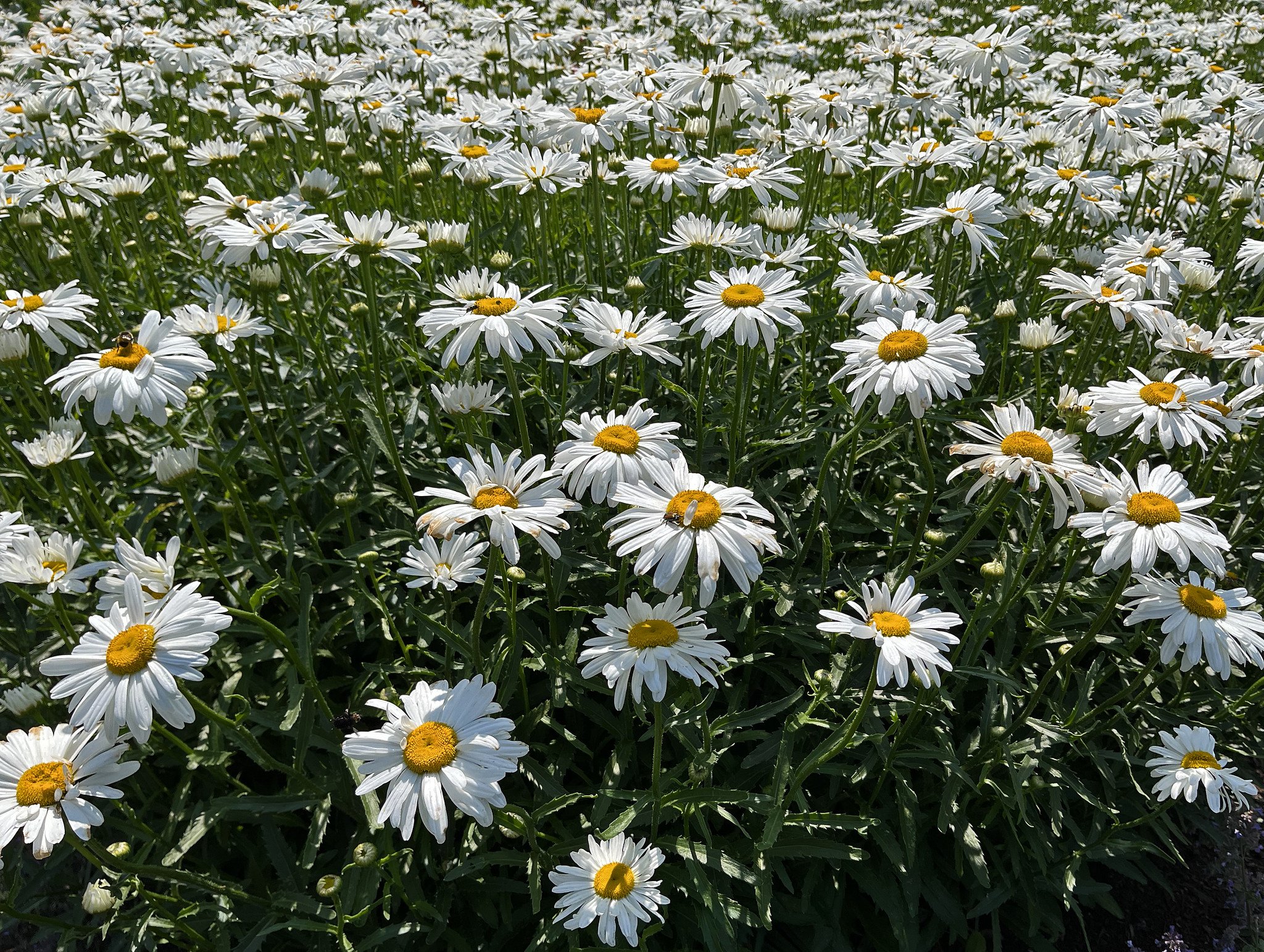


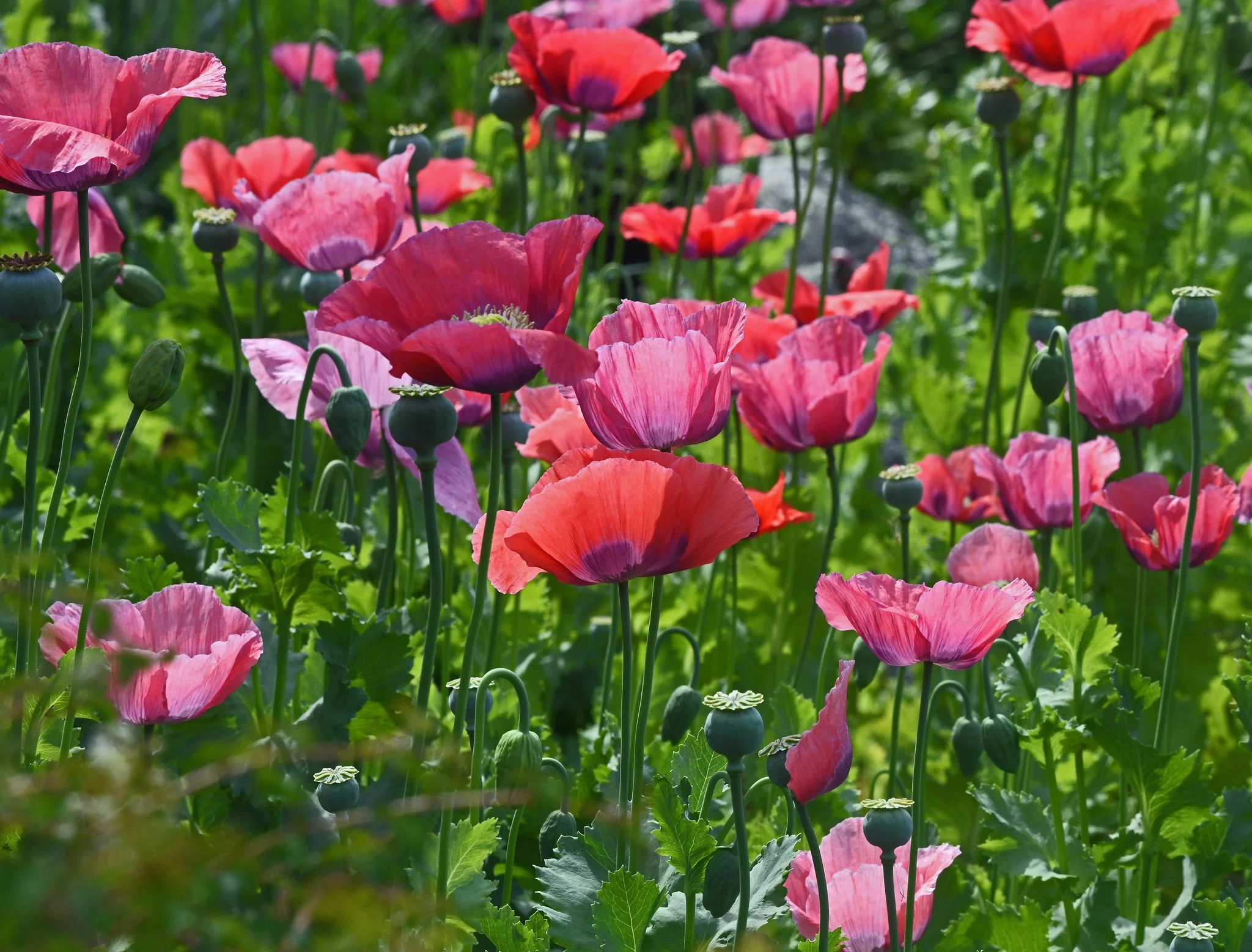












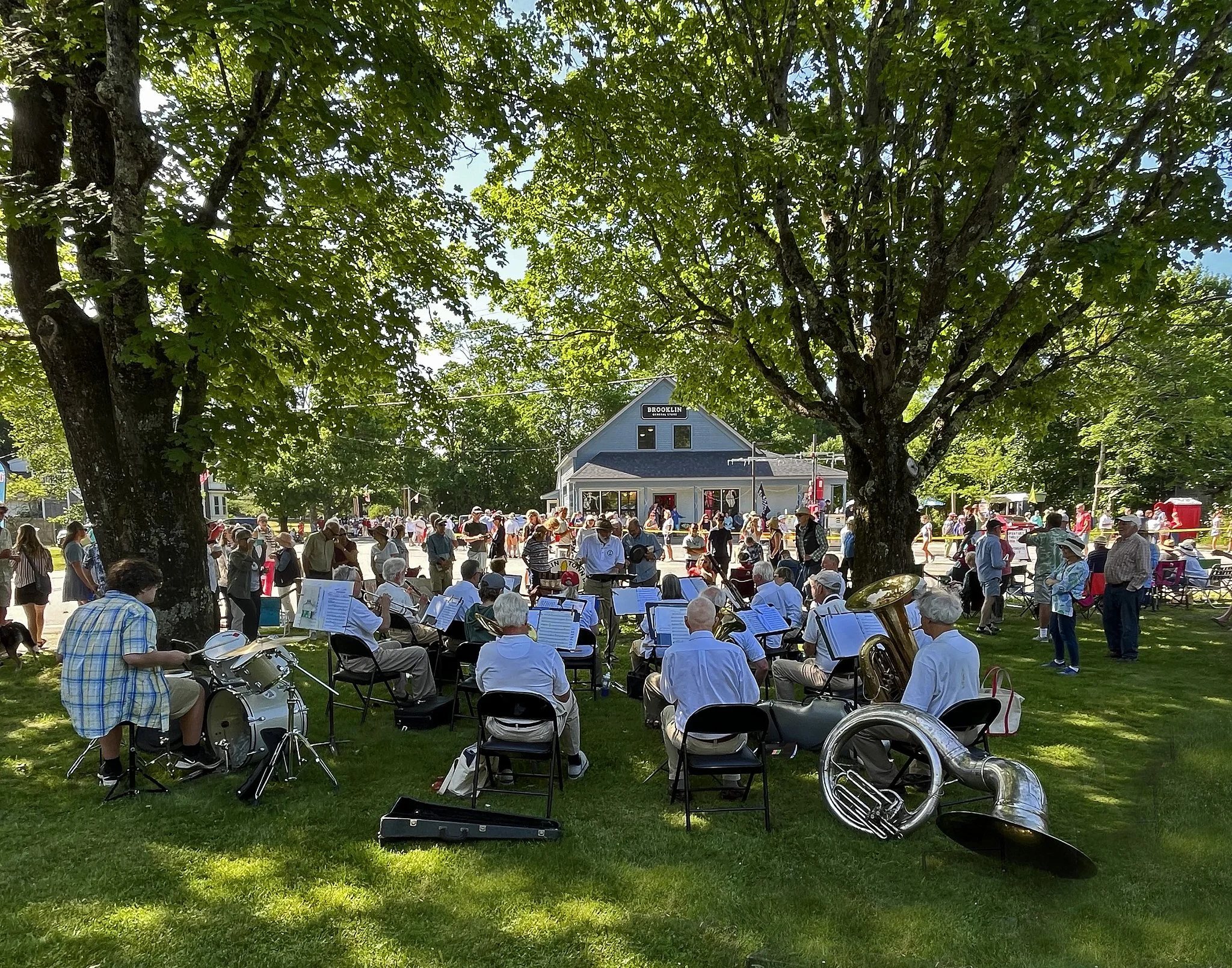











![5].jpg](https://images.squarespace-cdn.com/content/v1/55c0efcfe4b0a318ebdf786b/1753999623941-WZD3XYJQTA78JHBXY348/5%5D.jpg)
















